#chinese silk art
Text
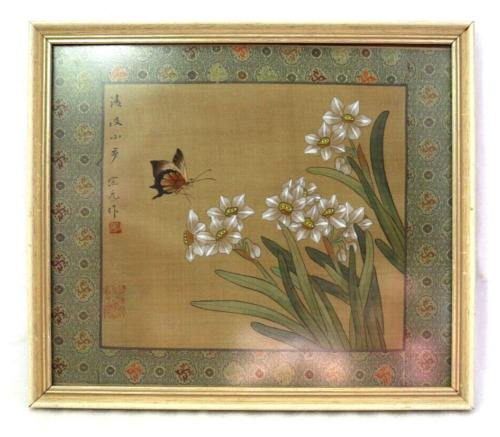
Vintage Chinese Asian Silk Painting Floral Butterfly Fabric Under Glass Framed || SWtradepost - ebay
#vintage framed art#silk framed art#chinese silk art#wall hanging#swtradepost#home decor#christmas#gifts#vintage chinese silk art#asian silk art
88 notes
·
View notes
Text

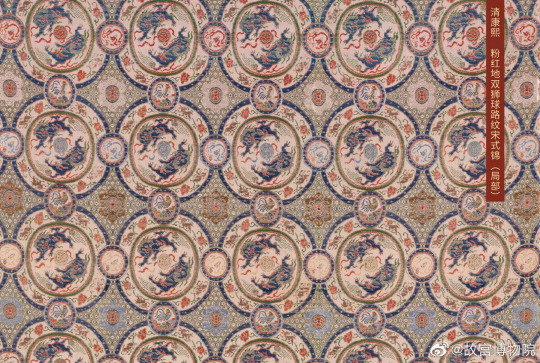
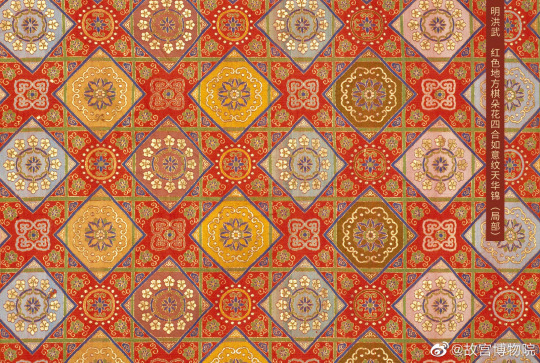


Chinese traditional patterns. 🧶🧵
#chinese culture#hanfu#textiles#patterns#chinese history#silk#china#east asia#designs#weaving#silk weaving#tiles#Art
749 notes
·
View notes
Text
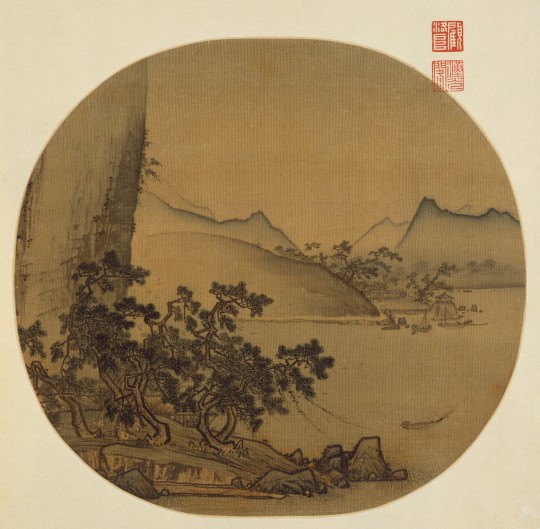
Boats Moored in Wind and Rain, unknown artist (formerly attributed to Yan Ciyu), 1200s (Jin or Yuan Dynasty)
#art#art history#Asian art#China#Chinese art#East Asia#East Asian art#Imperial China#Jin Dynasty#Yuan Dynasty#landscape#landscape painting#landscape art#rain scene#painted fan#album leaf#ink and color on silk#13th century art#Metropolitan Museum of Art
96 notes
·
View notes
Photo
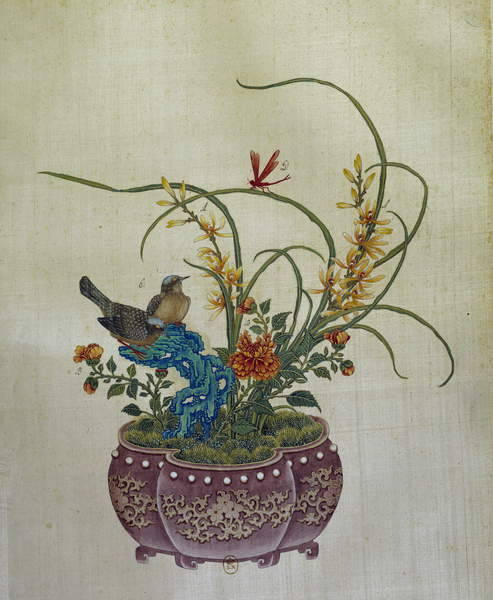
Chinese art: flowers and birds. 18th century silk painting. Paris, B.N. by School Chinese (Undated, oil on canvas)
#art#artwork#kunst#kunstwerk#school chinese#chinese art#chinesische kunst#asian art#asiatische kunst#flowers#blumen#birds#vögel#silk painting#seidenmalerei#l
38 notes
·
View notes
Text
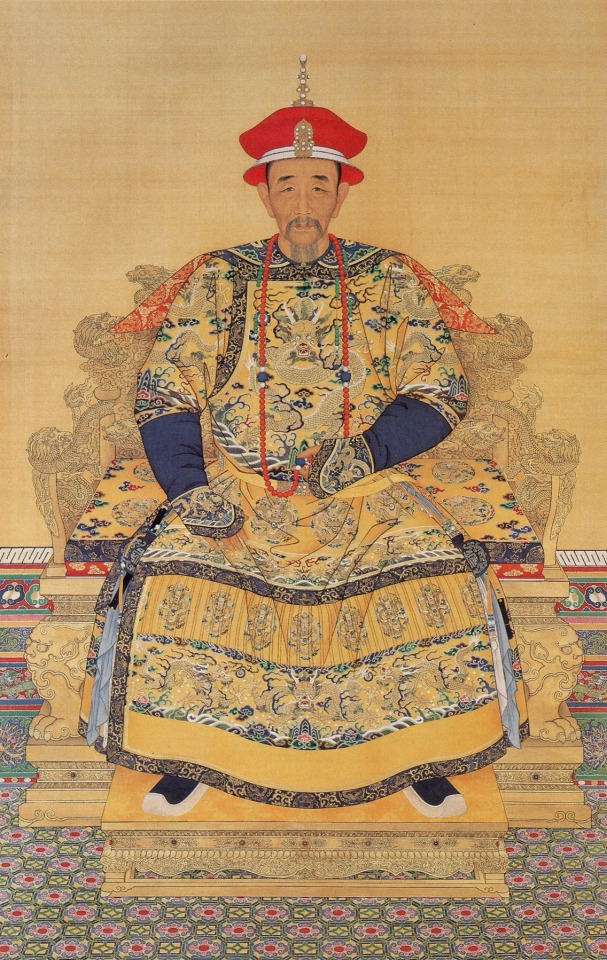
15 notes
·
View notes
Photo
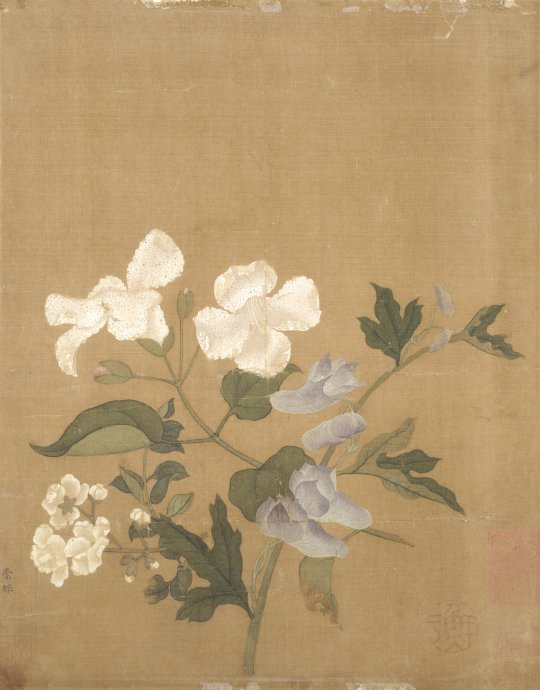
Hibiscus Flowers (Chinese, circa 17th century). Artist unknown.
Ink and colours on silk.
Image and text information courtesy Philadelphia Museum of Art.
75 notes
·
View notes
Photo
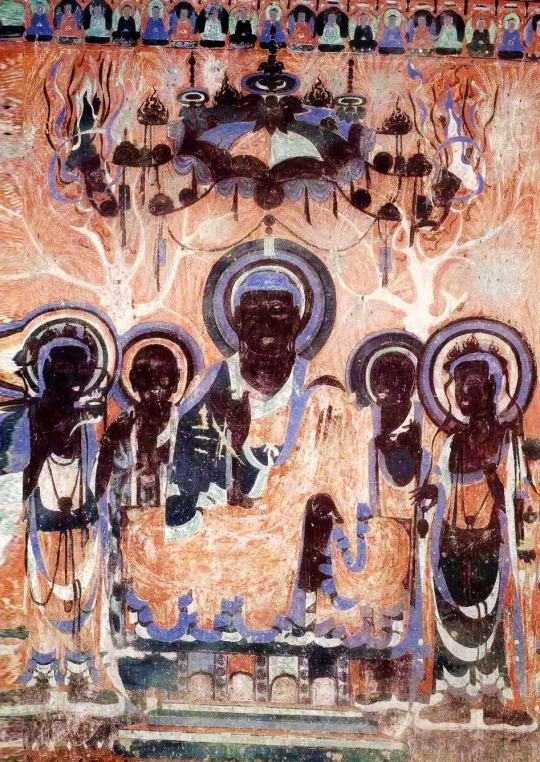
The Mogao grottoes' also known as "Caves of the Thousand Buddhas" 45,000 square meters (480,000 sq ft) of mural paintings and more than 2,000 color statues are regarded as the greatest treasure-house of Buddhist art existing in the world. source
#buddha#buddhism#dunhuang#china#shinar#tartary#grottoes#murals#art#chinese art#buddhist art#2nd century#late antiquity#silk road#asia#nagas
197 notes
·
View notes
Text
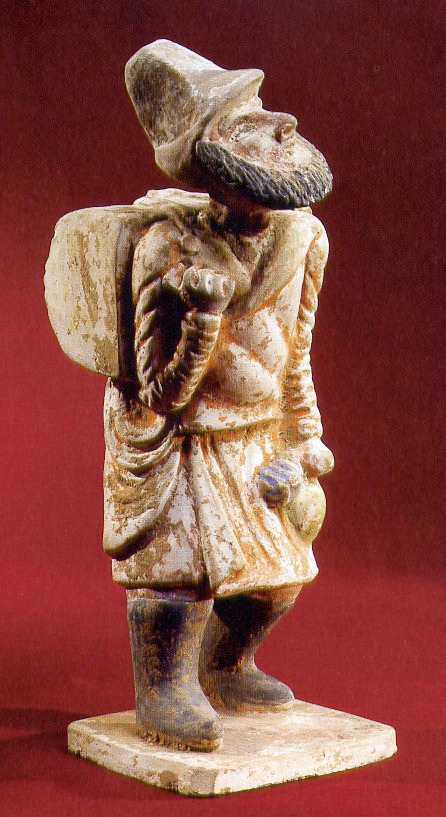
Foreign merchant (with Sogdian appearance) in China 618-907 CE
By the time the Hephthalites (White Huns) were destroyed the Sogdians had such a widespread influence that they were able to continue to enjoy their prosperity for another century. However, the crippling of the Hun's power by the Turks and Persians also eliminated Sogdiana's safety net and made them vulnerable. The chaos created to the east by the Turkic An Lushan rebellion in China and the chaos created to the west by the Sassanid's blundered aggression closed the doors on the Sogdian era of prosperity that had begun under Hunnic rule. Even after the An Lushan rebellion ended, China [one of the Sogdian's most important trading partners] was in ruins and vulnerable to other threats. Trade routes were choked off by hostile armies. Instability meant more danger for travelers. Sassanid rule had become so dysfunctional that the primitive Arab Muslims were able to conquer Persia, afterward pushing on into Sogdiana. The Hephthalites were no longer there to stabilize the Persian government as they had done in the time of Peroz and Khuvad. The Sassanids had gained their financial freedom from the Hephthalites and then, less than a century later, used that freedom to destroy themselves.
"In July of 751, a Tang army was defeated at the battle of Talas at the hands of a Turgesh-Arab alliance. The defeat effectively ended the Tang’s ability to intervene in Asia beyond the Tarim Basin. This defeat and the Tang’s subsequent inability to project force beyond the Tarim Basin played as important role in the downfall of the Sogdians as the Arab invasions themselves. With the Tang military held behind the Pamirs, the Tibetans moved to occupy the passes leading into China and into Kashmir, creating a chokehold on valuable trade networks the Sogdian merchants depended on for their livelihoods. Campaigns in 747 CE and 753 CE served to ease these Tibetan holds on the passes, but relief was only temporary. The Tang loss at Talas freed the invading Arabic forces to take control of Central Asia as well as weakening the Tang’s ability to cope with longstanding enemies closer to home. The situation for both the Sogdians and the Tang was only going to worsen. Taking advantage of the inner turmoil caused by An Lushan’s rebellion, Tibetan troops marched on and captured Chang’an in 763 CE. Rather than attempting to hold the city the Tibetans gradually withdrew along the Gansu corridor. Movement up this major trade artery by a hostile army could only have disrupted the Sogdian’s trade network, which was already likely in poor condition due to rebellions and the depredations of preceding armies. As the Tibetans withdrew they occupied the cities they encountered along the way, taking first Liangzhou (764) in the east and eventually Hami (781–782) in the west. At least two key Sogdian colonies at Hami and Chang’an, would have been seriously damaged by the rampaging Tibetans.
It is also quite likely that throughout their operations in China, Sogdian wealth would have proved a tempting target for looting by invading armies such as the Tibetans or rebelling generals. The Tibetan occupation of the passes restricted any influx of Sogdian immigrants into China to bolster the reeling Sogdian communities. With China wracked by invasions and rebellions, their Chinese colonies in ruins, the mistrust of the Sogdian people by the Tang due to the rebellion of An Lushan, and their homeland occupied by invading armies, the Sogdian trade network and nation could not but have suffered grievously. Previously the Sogdians had shown a remarkable ability to escape destruction, but the combination of forces besieging them eventually proved too great.
The Sogdians embodied the spirit of the Silk Road perhaps better than any other people. The Silk Road functioned as a conduit for exchange of both ideas and goods. The Sogdians for hundreds of years served as an invaluable vehicle for that exchange."
-The "Silk Roads" in Time and Space: Migrations, Motifs, and Materials. Edited by Victor H. Mair. Sino-Platonic Paper 228.
#sogdiana#tang dynasty#chinese art#ancient history#silk road#history#antiquities#art#sculpture#statue#ancient art
13 notes
·
View notes
Text
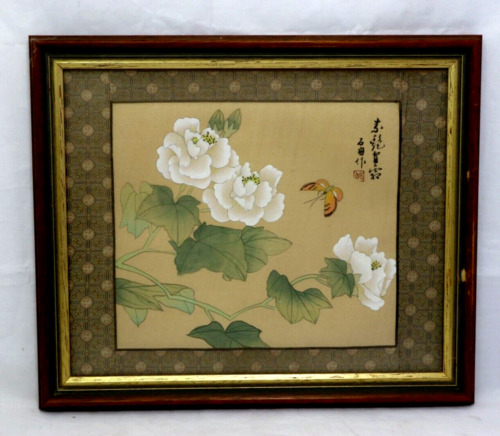
Vintage Chinese Oriental Floral Silk Print || SWtradepost
#silk art#silk print#framed silk art#chinese art#chinese silk art#wall hanging#silk wall hanging#swtradepost#home decor#vintage art
32 notes
·
View notes
Text




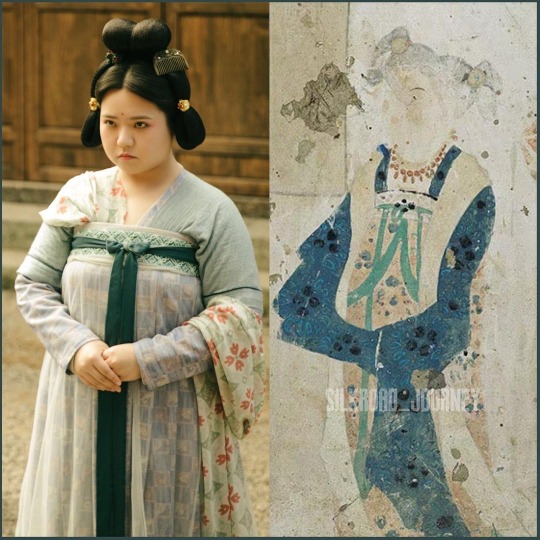

Tang dynasty period drama (Luoyang 风起洛阳) 2021
Vast majority of the C-drama costumes are restored based on real Tang dynasty paintings from the Mogao Caves. These are some examples.
Photos credit: silkroad_journey on Instagram.
#chinese history#chinese culture#hanfu#tang dynasty#Buddhism#mogao caves#China#silk road#ancient china#Medieval China#chinese drama#cdrama#hanfu recreation#Hanfu restoration#dynastic china#art
229 notes
·
View notes
Text
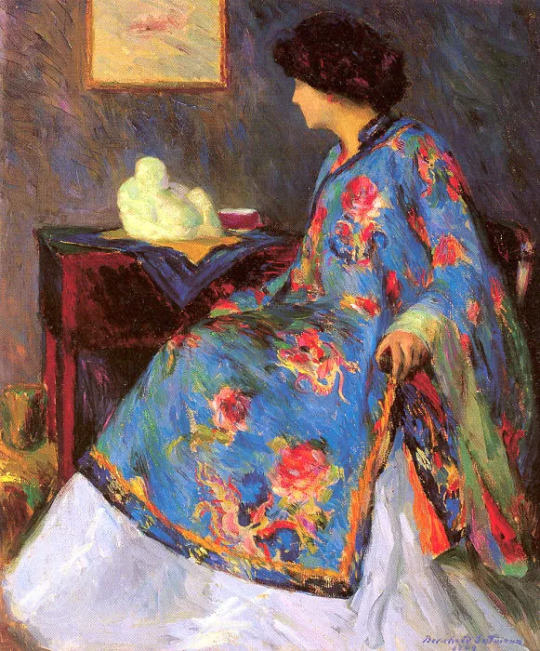
Bernhard Gutmann (German, 1869-1936) - Lady In A Chinese Silk Jacket (1909)
#Bernhard Gutmann#Lady In A Chinese Silk Jacket#art#paintings#portraits#Chinoiserie#impressionism#20th century#1900s#post impressionism
3 notes
·
View notes
Text
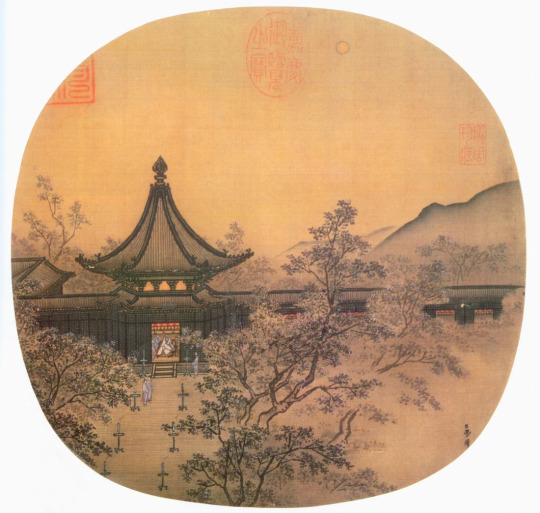
Strolling at Night Holding a Candle (aka Waiting for Guests by Lamplight), Ma Lin, ca. 1250
#art#art history#Asian art#China#Chinese art#East Asia#East Asian art#Ma Lin#Imperial China#Song Dynasty#landscape#landscape painting#landscape art#ink and color on silk#13th century art#National Palace Museum
86 notes
·
View notes
Photo

The Peach Festival of the Queen Mother of the West, Ming or Qing Dynasty, 17th-18th century by Chinese School (ink and colour on silk)
#asian art#asian#art#artwork#chinese#chinese school#chinese art#china#ming dynasty#quing dynasty#peach festival#peach#festival#chinese festival#asian festival#ink#silk#seide#lanscape#asian landscape#chinese landscape#temple#temples#taosim#culture#asian culture
15 notes
·
View notes
Text
A little silky sophistication for the home? Don't worry, we have you covered.

With an extra 5% off every purchase from etsy, on top our of sale savings. Visit The Aesthete London, and buy something special today. Limited stock on all items.
#modern art#original art#interior design#interiors#interiordecor#home decor#silk#vintage#oriental art#rare art post#art#abstract art#asian art#chinese art#decor#home design#home interior#wall art#wall painting#contemporary art#dragon art#buy art#art shop#etsyshop#handmade#bespoke#sophisticatedliving#sophistication
2 notes
·
View notes
Text
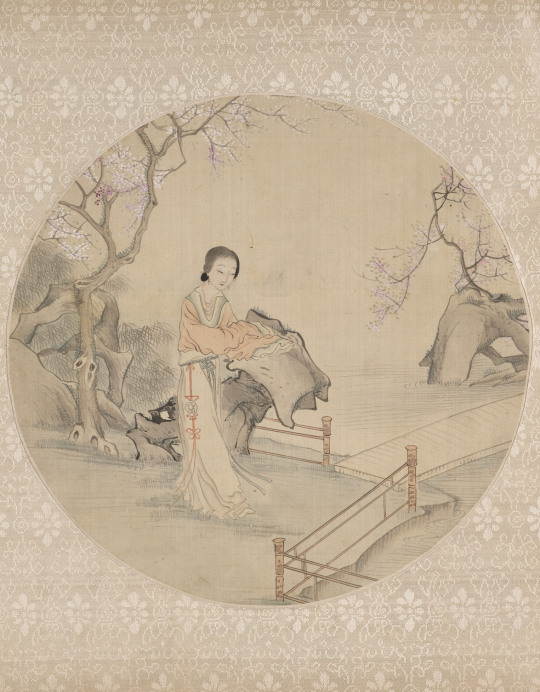
Junge Dame an einem Fluss - Young lady at a river. From a collection of four Chinese silk paintings. Pen and ink on silk, heightened with watercolours and gouache; mounted on backing, partly with silk border. | src Jeschke van Vliet · Jádi Berlin
view on wordPress
19 notes
·
View notes
Text
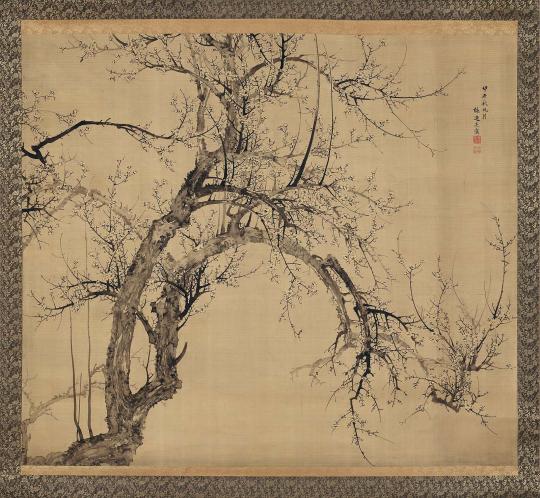
Blossoming Plum Tree
老梅図
ccc (Japanese, 1783–1856)
Japanese
Edo period
1834
#Blossoming Plum Tree#plum tree#老梅図#Yamamoto Baiitsu#edo period#hanging scroll#ink on silk#Prunus mume#ume#Chinese plum#Japanese plum#Japanese apricot#plum blossom#japanese art
5 notes
·
View notes